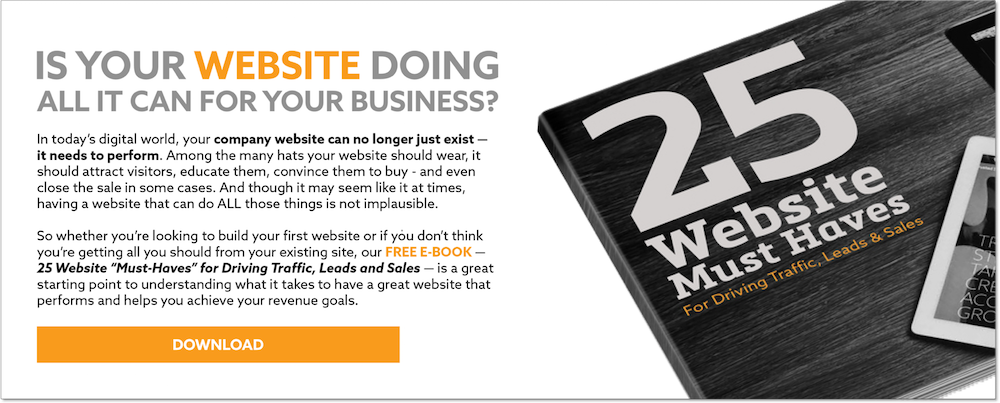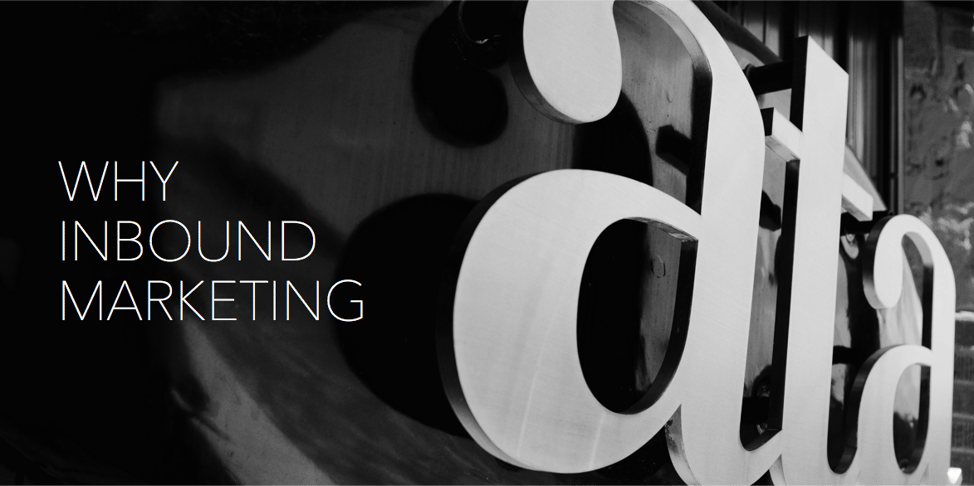
If you're looking for an article that tells you why you SHOULD pursue Inbound Marketing, this isn't it. If you're looking for the differences between Inbound Marketing & Outbound Marketing,there's plenty of content out there—good content at that—including our recent blog post. Instead, this post focuses on our journey towards Inbound Marketing and why we decided to pursue this methodology for our business and as a new service to offer our clients.
In the spirit of full disclosure, ATA is a HubSpot Partner Agency, but we offer much more than that depending on our clients' needs and what they're trying to accomplish: product launches, branding campaigns, channel promotions, web development, CGI, video and commercial production, SEO/SEM, and digital campaigns, as well as consulting work to help companies re-engineer their internal commercial processes. But before this turns into a commercial for our agency, let's get into why we went Inbound... here's what you'll find in this post:
- What is Inbound Marketing
- REASON 1: Creating Marketing that People LOVE
- REASON 2: We Understood The Buyer's Journey
- REASON 3: Content IS "Working" Media (and It's Less Expensive)
- REASON 4: "Success" CAN Be Measured
- CONCLUSION: We Were Already an Inbound Agency... Sort Of
What is Inbound Marketing?
Inbound marketing is about attracting potential customers to you rather than fighting for their attention. Unlike traditional Outbound Marketing methods that seek to interrupt a large number of people wherever they might be and forcing products into their consciousness, Inbound Marketing is about creating authentic connections with your potential customers by aspiring to help them make informed, educated purchase decisions. Ultimately, this will draw them to your products and keep them coming back for more.
Inbound Marketing has become the most effective and proven online marketing method because it focuses on creating quality content that aligns with your ideal customers’ interests, questions, and problems. When that “right” content is distributed at the “right” time, in the "right" way, and at the “right” place, it attracts the “right” inbound traffic to your brand organically and helps create an authentic connection to your visitors so you can then convert, close, and delight them over time. When properly implemented, Inbound is the marketing that people actually love!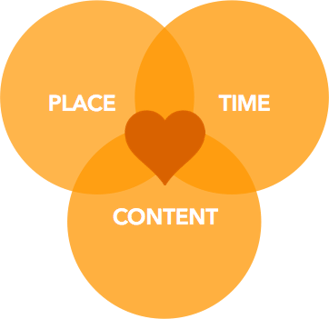
Inbound Marketing is based on a proven methodology that empowers marketers to attract visitors, convert leads, close customers, and delight promoters, and it provides the necessary tools to activate, execute, and measure the impact of each of the tactics implemented. Inbound Marketing doesn’t just "happen", you do it by using tools and applications that help you create and deliver content that will appeal to precisely the right people in the right places at just the right times.
Again, if you'd like to get a deeper understanding of Inbound Marketing and the differences between Inbound Marketing & Outbound Marketing, we've got a pretty good blog post on the topic.
So why did we think Inbound Marketing was right for us? Keep reading...
BACK TO TOPREASON 1: Creating Marketing that People LOVE
Yes, you read that line in the previous section. It's not anything revolutionary... but it's the line that resonated with us because it was the way we already thought about our work. We wanted to connect with the intended audience on a deeper level and we felt we could do that through the content that we developed. Creating marketing that people LOVE really felt like us.
Here's an example from one of our longest-tenured clients, Dupli-Color® Products.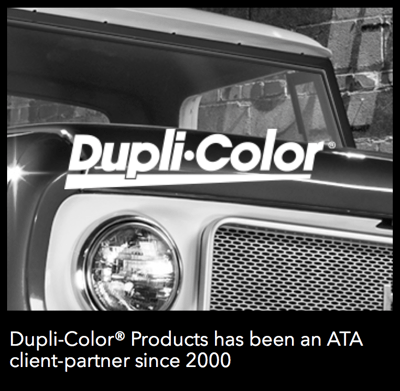
Dupli-Color is an automotive paint manufacturer within the Sherwin-Williams umbrella. In our time with them, we really got to know their primary persona—the automotive DIYer—by interviewing a number of people who were using Dupli-Color's products. This knowledge has shaped just about every program and content decision/recommendation we have ever made for the brand. Here's what we got to know about this end-user:
- He (yes, it was mostly a "he") owned 3-4 vehicles and made time to actively work on his vehicles somewhere between 1 to 10 hours per week (yeah, we thought that was a lot too).
- He took tremendous pride in proving to himself and to his peers how much he knew about cars by showing off the work he'd done on his vehicles. Whether it be the paint job or something under the hood, that peer validation of his abilities was HUGE.
- He was constrained by his abilities and his budget. He knew his car may never end up on the auction block at a high-end car auction like Barrett-Jackson... but he was going to have a damn good looking car that ran great, and he wasn't going to have to take out a 2nd mortgage to get it.
Because we got to know Dupli-Color's end-user so well, the content we developed was tailored specifically for him.
- VIDEOS: Dupli-Color's videos needed to be educational but also engaging, and they needed to demonstrate the possibilities that the end-user had to get his own ride to look sweet, so we took an episodal approach to the content. Our Content Studio allowed us to rebuild entire vehicles over a period of time and release regular video content that not only showed specific product applications—which was great content in and of itself—but also allowed the end-user to actually see the vehicle slowly being transformed. We've done four different Restoration Series to date... and they've all appeared to be very successful, but we'll get to how "success" was (or wasn't) evaluated in a few paragraphs.
- Dupli-Color Restoration of a 1979 Chevy El Camino: we only did half the car; the other half remained as it was so everyone could see the striking difference.
- Dupli-Color Restoration of a 1969 International Harvester Scout 800
- Dupli-Color & VHT Restoration of a 1972 Plymouth Satellite Sebring
- BROADCAST:
Wait, isn't broadcast advertising an example of Outbound Marketing? Well, technically, yes... but not the way we approached it. We didn't just "buy time" on networks to get a :30s spot to run during popular automotive shows. Instead, we developed great partnerships with the production houses that created the programs that were featured on these networks—places like RTM Productions and Brenton Productions. These relationships allowed us to help produce the very content that would end up on these shows featuring our clients' products. This wasn't just product placement; this was our client's products BECOMING part of the content of the shows... content that was rich, engaging, educational, and attractive to Dupli-Color's target audience.
- CONTENT DISTRIBUTION: In 2009 & 2010, we'd run a great promotion which encouraged enthusiasts to submit photos of their vehicle restorations for a "March Madness" style bracket competition where their peers would decide the winner—the Restoration Challenge 2009 & 2010. The 2011 Restoration Challenge involved vocational & technical schools to appeal to the next generation of automotive enthusiasts. Through these efforts, we'd amassed a database of nearly 30,000 automotive enthusiasts who genuinely wanted to hear from Dupli-Color. Now don't forget, in 2009 brands were still trying to figure out how to participate in these new-fangled social media things like Facespace and MyBook ;-) and while Twitter existed, it wasn't really on the radar for brands yet. But we were able to effectively leverage the spirit of these promotions and the episodal video content that we were producing on a regular basis to launch the Dupli-Color Facebook Page. Our audience engagement was incredible from the start and we continued to not only regularly share our content, but also to engage with the audience and encourage them to share photos of their work, even if it didn't feature Dupli-Color products. We built a community of passionate enthusiasts, which today has reached over 60,000, who are deeply connected to the brand and actively promote Dupli-Color to their peers.
REASON 2: We Understood The Buyer's Journey
When you're in business for nearly 30 years, you get an opportunity to work with many different clients and on many different types of projects. When we first started out, like many other agencies, we were going to revolutionize the advertising industry—every project we took on was going to be the single reason why our client doubled their business.
However, we learned early on that no one "thing" can be the silver bullet; there's no single tactic or video or ad that's going to attract people who've never heard of you AND help them understand your product or service AND encourage them to buy. We didn't really have a term for it, but we knew trying to do too much with any one tactic was a formula for failure.
For quite a while, we encouraged "integration" of various disciplines or tactics in order to achieve an objective. This was our way of trying to help our clients understand that while they wanted to create a competitive comparison brochure or video, we would probably need to do "something" to let people know that the video existed and then "something" to close the loop if the video resonated with them. While many of these tactics were "outbound" in nature, they were still attempts to connect with the intended audience at different phases of its buying process.
When we learned about the Buyer's Journey, it immediately crystalized for us what we'd been trying to help our clients understand. As defined by HubSpot, the Buyer’s Journey is the process buyers go through to become aware of, evaluate, and purchase a new product or service:
- Awareness Stage: The buyer realizes they have a problem
- Consideration Stage: The buyer defines their problem and researches options to solve it
- Decision Stage: The buyer chooses a solution
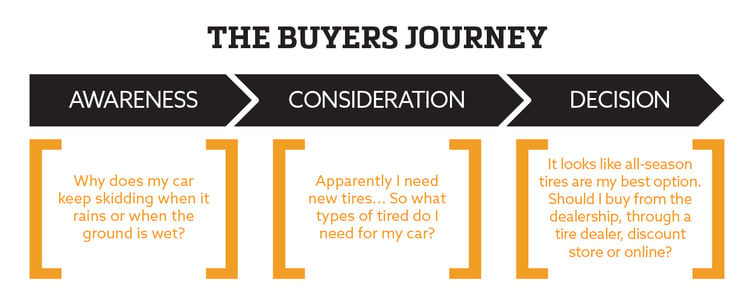
With the Buyer's Journey, it has become much easier for us to address any project objective with our clients. Knowing which stage of the journey the client wants to target helps frame not only the direction of the content but also the tactics that will be utilized to develop and distribute the content appropriately.
REASON 3: Content IS "Working" Media (and It's Less Expensive)
"Advertising" agencies have long had to work with or around client perceptions relative to "working" and "non-working" media. When referring to "working media", many marketers unfortunately only consider paid media—the actual spend that can be attributed to purchasing ad space or time. Far too often, this leaves all other forms of media to be considered "non-working", including content (web & other), videos, social media, and anything else that is not sourced from paid media publishers. The very premise of the terms working vs. non-working media implies that all paid media "works" (adds value) and that all other marketing expenditures don't add value.
Of course, when one thinks about today's marketing ecosystem, it's not hard to see that this "old school" way of thinking is, well, past its expiration date. Advertising Age called it a myth and wrote a great article dispelling it. Here's our take:
- First, there's the fact that any media—paid or unpaid—is only as good or effective as its actual content, which is considered "non-working" by yesterday's definition.
- Second, and perhaps more importantly, the combination of beautiful and relevant content with search engine optimization (SEO) and Social Distribution/Engagement has created new "unpaid" alternative media forms called Client-Owned Media and Earned Media. Both of these new forms of media, which can hardly be described as "non-working", have become critical components of today's marketing mix because they've proven to be more effective than the traditional spray-n-pray techniques.
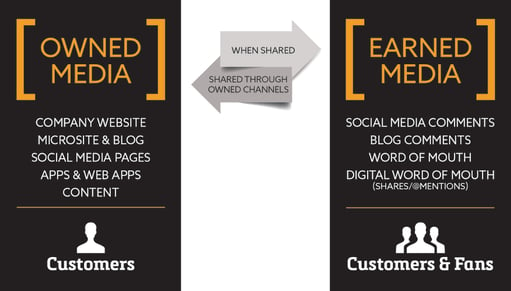
With Inbound Marketing, you actually leverage your Client-Owned Media to generate Earned Media. This media continues to deliver leads, conversions, and sales for as long as there is an internet. This is why Inbound Marketing is a less expensive alternative than the traditional "working media"—over 60% less expensive on a cost-per-lead standpoint. Here's why:
If a marketer spends $100,000 to generate leads through the company website ($20,000 in "non-working" media to create the ad campaign plus $80,000 in "working" media through PPC & broadcast), two things will happen:
- The percentage of people they interrupt with the ad campaign that actually become leads will be relatively small compared to an Inbound approach.
- Once the $80,000 in "working" media is spent, it will stop generating leads altogether. So if they want to continue to generate leads, they will need more money to spend on "working" media.
- And the $100,000 doesn't address the necessary content that can help nurture the lead into a conversion or a sale.
- Because the content itself is based on the evaluation of actual search terms and phrases that the target audience types into search engines, the marketer knows the content is incredibly relevant— the target audience will WANT to consume it. This makes the approach highly effective and efficient from a lead generation standpoint.
- Because the content will be as relevant in 8-12 months as it is the day it is published, the approach will continue to deliver leads for an extended period of time. If 600 people per month are searching for a particular term, and the content developed is properly SEO'ed for that term, that's 600 people per month for the foreseeable future who will be exposed to that content. So each lead that the content delivers over time will cost less and less.
- Finally, the ability to utilize the full budget allows for the development of content that's targeted to each stage of the Buyer's Journey, not just the Attention Stage. So in addition to attracting leads, the content will help nurture prospects through their journey towards making a purchase, something that traditional "working" media can't deliver.
REASON 4: "Success" CAN Be Measured
For all of the work that we were doing for our clients, one thing that we really couldn't deliver with many of the programs we developed was tangible evidence that things were working. We'd always approached our work by trying to identify a goal that we could work towards, even if the client didn't necessarily have one in mind, so we could have some form of objective measurement of "success". But connecting the dots was never easy.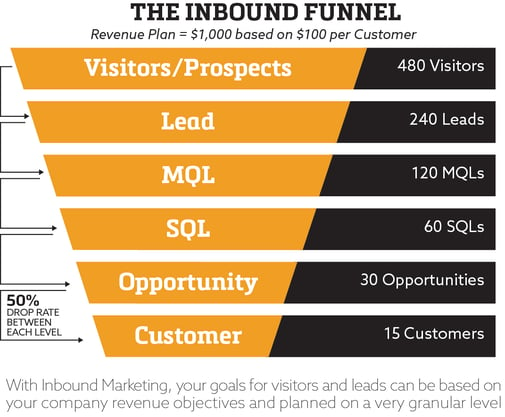
Sure, just like everyone else we could count YouTube video views and provide statistics on viewership of the broadcast integrations, but what did those statistics even mean? Even those programs which encouraged some form of a "sign-up" were difficult to connect to revenue because there was little in the way of a qualification process or a follow up from a sales rep. The reality was that unless a client had an e-commerce platform on their website and we ran some form of digital campaign, talking about the "success" of a program proved difficult and subjective at best.
This was never a comfortable situation for us because it made our work difficult for many of our clients to justify within their organizations from a budget perspective. Better said, a client may have received budget approval to do a video series for one year, but without being able to demonstrate how that video series resulted in incremental revenue, it would be difficult to justify doing another video series in the subsequent year, even if EVERYONE KNEW it worked.
With Inbound Marketing, every activity and tactic—down to seemingly trivial things like call-to-action buttons—can be tracked and directly connected to revenue. That's an incredibly powerful position for any marketing organization and, for us, an instrumental piece in demonstrating the success of any program or project that we take on, provided it's done in an Inbound way.
CONCLUSION: We Were Already an Inbound Agency... Sort Of
The more we learned about Inbound Marketing, the more we realized that the way we'd always approached our work was very compatible with the Inbound Methodology. We always sought to create content that really connected with people, and Inbound Marketing not only put a premium on what we were already doing, but it also provided the platform that allowed us to formalize the process and drive towards results that truly mattered.
We believe in Inbound Marketing. That's why we're using it for our business and why it's one of the services we offer our clients. It's not all we offer because there are still many clients that just need a website or a series of videos or even a PPC campaign to drive short term results. But for those clients that are looking for a sustained, long-term, less costly, and more "trackable" approach to driving impactful revenue growth, you'd be hard-pressed to find anything more powerful than Inbound Marketing.



